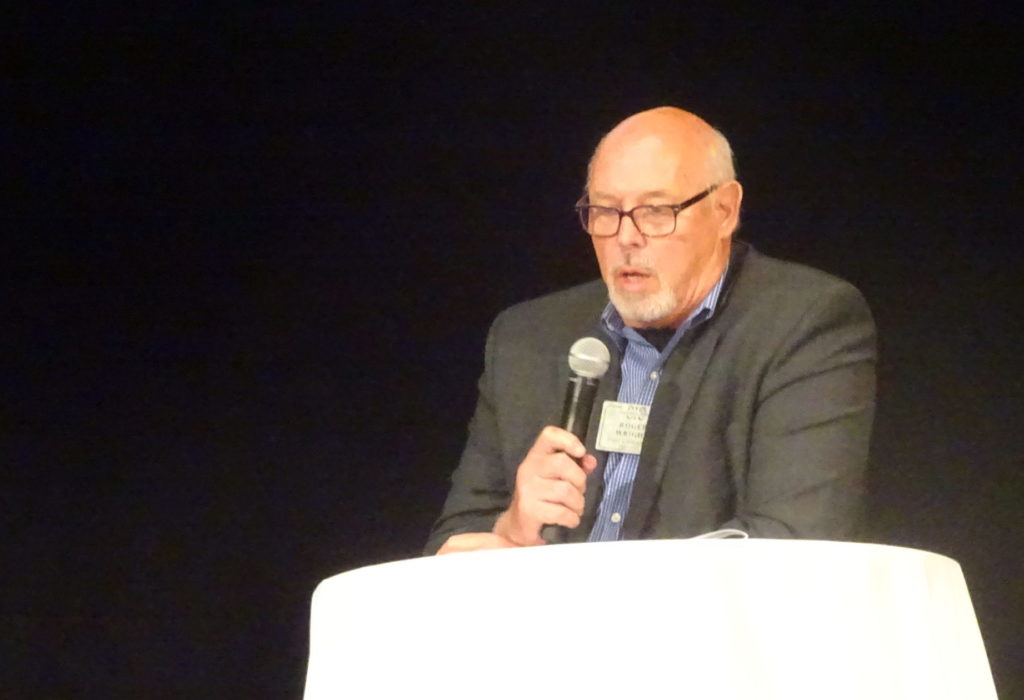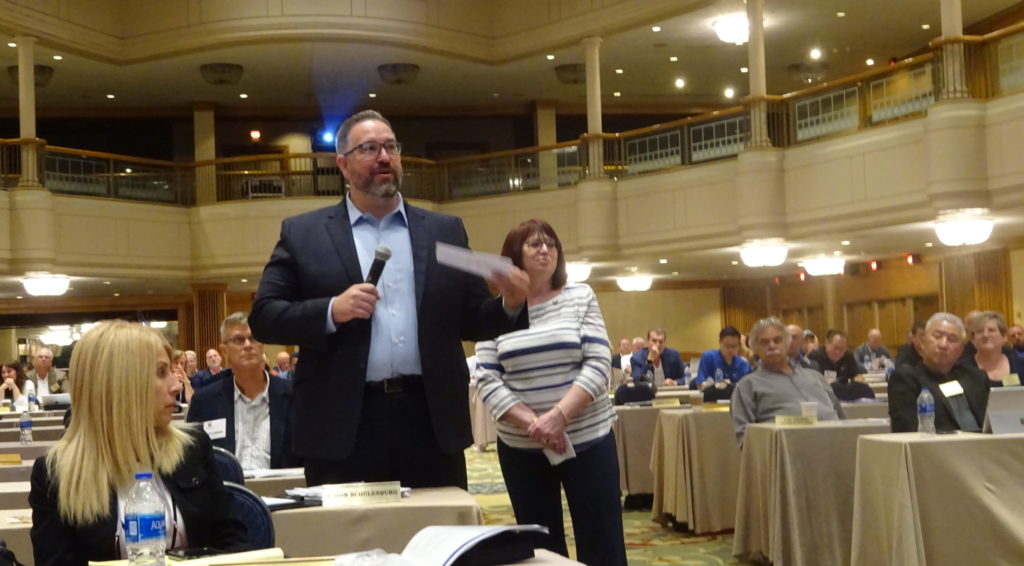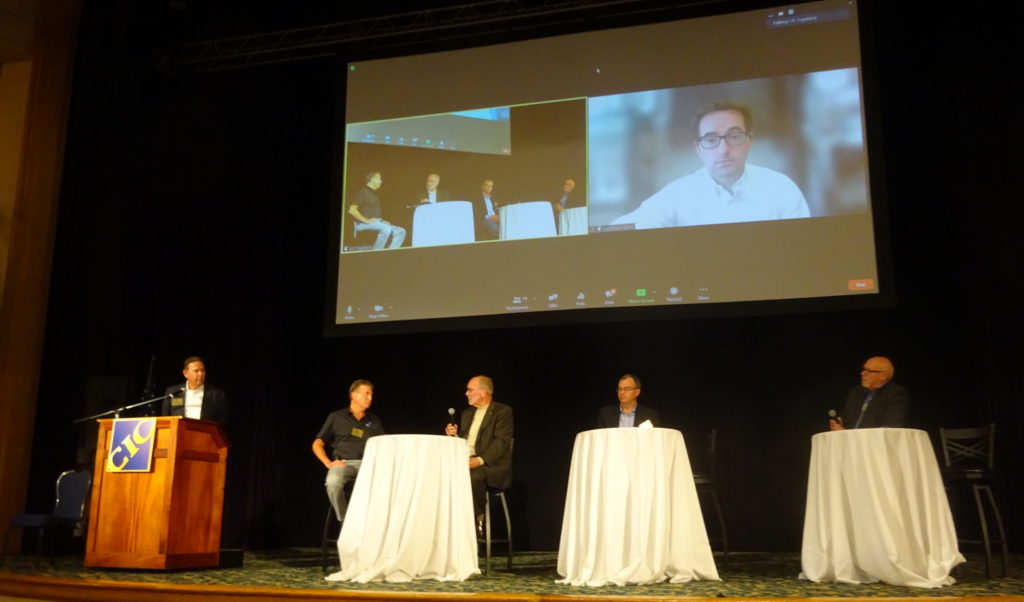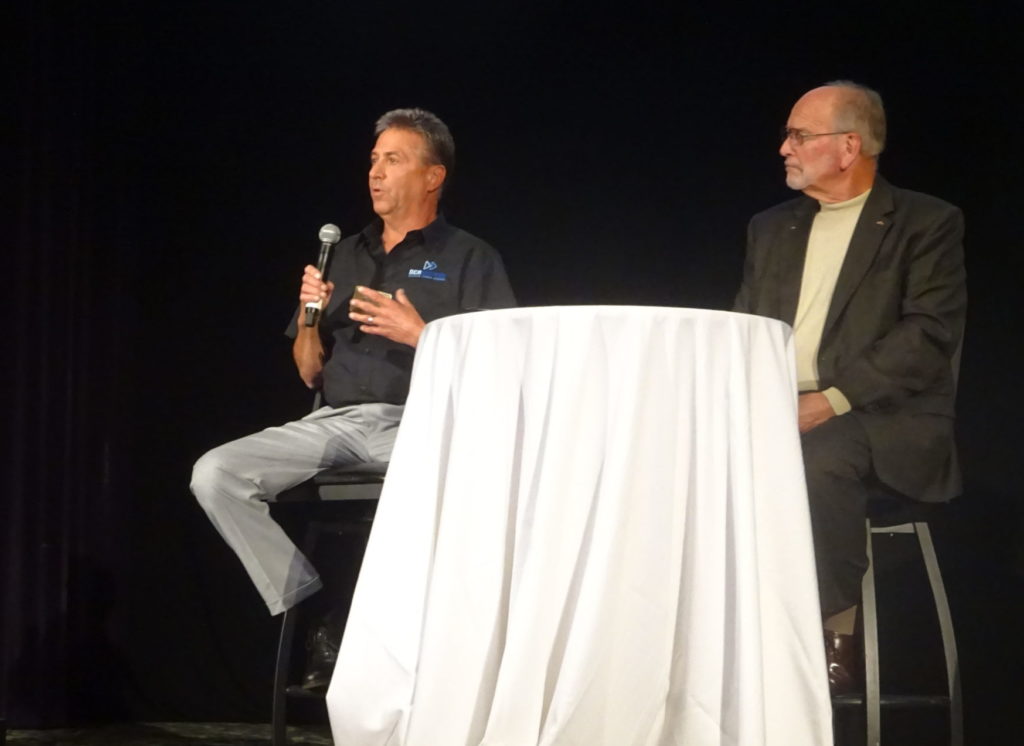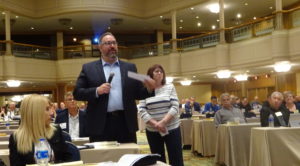
Solutions to insurer repair procedure severity grief might lie outside of claims
By onAnnouncements | Associations | Business Practices | Education | Insurance | Market Trends | Repair Operations | Technology
Insurers might be trying to combat claim severity by denying reimbursement for required repair operations, rather than address the problem where it can truly be solved, based on a discussion at the July 15 Collision Industry Conference.
Effectively, insurers are lashing out at consumers and body shops rather than the automakers and actuaries at fault for their predicament.
“OE procedures’re what’s changed the industry,” said Roger Wright, the founder of VectorSquared and a CIC Industry Relations Committee session panelist.
Wright illustrated an insurer’s thought process by recalling when he first heard of a scanning position statement in 2016.
Body shops thought they fixed cars to OEM standards, yet then received a bulletin they hadn’t, Wright said. Were all those unscanned vehicles to be recalled? The concept caused “consternation” among insurers, who wondered, “‘How can that be?'” he said.
Suddenly, a midsize insurer has $2.7 million daily average severity which hadn’t been accounted for, which is “real funny to them,” Wright said.
“They push back a little bit,” Wright said: Perhaps not every car needs a scan and some subjectivity can be introduced.
Wright also described a “big manufacturer” of a vehicle whose owner’s manual specified replacing seatbelts after any accident. It was an “OE requirement,” but “very seldom” did any shops he knew replace the seatbelts. This was a while ago, according to Wright — perhaps today, with more litigation, repairers would view this instruction differently, he said.
Unfortunately, the need for vehicle diagnostics might have already existed prior to those position statements — it might have just been unrealized by repairers and claims departments until automakers hit the industry over the head with it. (For example, here’s an I-CAR column promoting the practice from 2015.) And just because many repairers ignored or overlooked the seat belt instruction didn’t mean they were right to do so.
“Tide Pods didn’t always say, ‘do not eat’ on the packaging,” Society of Collision Repair Specialists Executive Director Executive Director Aaron Schulenburg said tongue-in-cheek from the audience. “It didn’t mean it was right to eat them before that.”
In this regard, the severity surprise these announcements generated or could have generated might reflect a failure to keep up on the part of the underwriters as much as repairers and adjusters. Under “Right to Repair,” all service information available to a dealership was supposed to have been made available to the public dating back to the 2002 model year.
Insurer inconsistency
Insurance’s role is to provide a consumer protection against a financial loss and spread out the risk to address that cost, Schulenburg said. “That’s an underwriting issue,” he said.
If the insurer hasn’t prepared for that risk — i.e., the cost of repair — they can take it up with the automakers or their own actuaries who underestimated the risk, Schulenburg said.
“Don’t argue with the shop following documented procedures,” Schulenburg said, calling such insurer behavior “one of the biggest issues we have out there.”
In addition, the vehicle technology driving up repair costs stemmed from government and Insurance Institute for Highway Safety demand, Schulenburg said.
“The insurance industry asked for the technology in the vehicles,” Schulenburg said. Yet it fights the repair operations associated with that tech, he said.
“We can’t use the claims process as a way to mitigate things we asked for in the research process,” he said.
Database Enhancement Gateway Administrator Danny Gredinberg also pointed to a “disconnect” he sees in his role fielding inquiries from shops and insurers about estimating system processes.
Insurers treat the information providers as “a Bible,” yet they ignore clear P-Pages declarations of what’s included and not included, he said.
Work with OEMs
Repairers should write good repair plans, and insurers should trust shops, Wright said.
But insurers need to “work with the OEs a little more” on the engineering behind such repair procedures. For example, he said, what’s the science behind an automaker’s decree to replace a part on every vehicle in an accident. And what do they define as an accident?
“It just creates issues for the insurer,” Wright said.
When insurers do talk to OEMs, it’s indeed possible to obtain severity-lowering engineering changes, according to Wright.
Wright observed that insurers got involved with the C6 Corvette, pushing General Motors for bolt-on panels and sectionable front and rear rails to keep insurance rates down. He also recalled an original design for the Chevrolet Lumina van incorporated a fixed mirror molded directly into the SMC composite door.
After a large insurer pointed out how many simple mirror strikes led to the carrier having pay to replace the entire door, GM redesigned the mirror, Wright said.
Another situation arose when Ford placed a horse design in a rear bumper to ward off aftermarket versions of the part, according to Wright. “That car became very uninsurable,” he said.
Audi collision programs manager Mark Allen reported from the audience that Audi has openly invited insurers to talk with it about such matters, but only a small amount actually participate.
Industry Relations Committee Co-Chairman Jonathan Chase (Mobilitas) said he ‘very seldom” saw insurers and OEMs talking. He gave the example of a Ford mandate for OEM bumpers coming as a surprise and causing “consternation” among carriers, he said.
Wright noted that using virtual estimating to solve the issue of rising severity due to vehicle complexity was an example of what SCG Management Consultants President Sean Carey criticized as using an economic solution for an engineering problem.
Insurers roll out virtual estimating, save 5-6 percent on loss adjustment expense, and feel good about themselves, but “they’re kind of not looking at the big picture,” he said. Working with the shop while using some elements of virtual estimating would be a better solution, he suggested.
Repairer still liable
The fact that an insurer blew their chance to talk to an OEM early or is in the process of pursuing a design change doesn’t alter the repairer’s responsibility to fix the vehicle using the existing OEM procedures.
Session panelist Ron Reichen, owner of Precision Body and Paint, said that as a repairer, he must follow OEM procedures. Panelist DCR Systems CEO Michael Giarrizzo said it’s clear the body shop is liable for the repair.
He agreed some repair procedures feel like the OEM attempting to cover itself, but he called that a discussion for the automaker and the vehicle insurer.
As a body shop, “you have no choice” but to follow the OEM procedures, he said.
Reichen also pointed out the absurdity of attempting to negotiate OEM procedures, saying a repairer didn’t have the right to do so on behalf of the customer.
Otherwise, it produces an absurd situation for a body shop: “‘What don’t you want me to do on this?'” as Reichen put it: Would the insurer pick which procedures the shop shouldn’t follow? “Whose baby are you gonna kill?” he said.
ProSight Specialty Insurance dealership and repairer program head David Willett, another panelist, observed that unfortunately, one doesn’t always encounter “instant accountability” for doing a correct or incorrect repair.
A body shop which fixed a vehicle the wrong way might never be found out if the car doesn’t get into a crash, Willett said. He also noted overall statistics might also lead to a mistaken confidence in repairs — aggregate numbers mask the “blips” which go wrong.
Images:
Society of Collision Repair Specialists Executive Director Aaron Schulenburg addresses a July 15, 2021, Collision Industry Conference Industry Relations session. (John Huetter/Repairer Driven News)
Roger Wright, the founder of VectorSquared, speaks during a July 15, 2021, Collision Industry Conference Industry Relations session. (John Huetter/Repairer Driven News)
Panelists participate in a July 15, 2021, Collision Industry Conference Industry Relations session. Moderators and committee Co-Chairmen Jim Keller (1Collision) and Jonathan Wright (Mobilitas) are at far left and above right, respectively. (John Huetter/Repairer Driven News)
From left, panelists DCR Systems CEO Michael Giarrizzo and Ron Reichen, owner of Precision Body and Paint appear during a July 15, 2021, Collision Industry Conference Industry Relations session. (John Huetter/Repairer Driven News)

